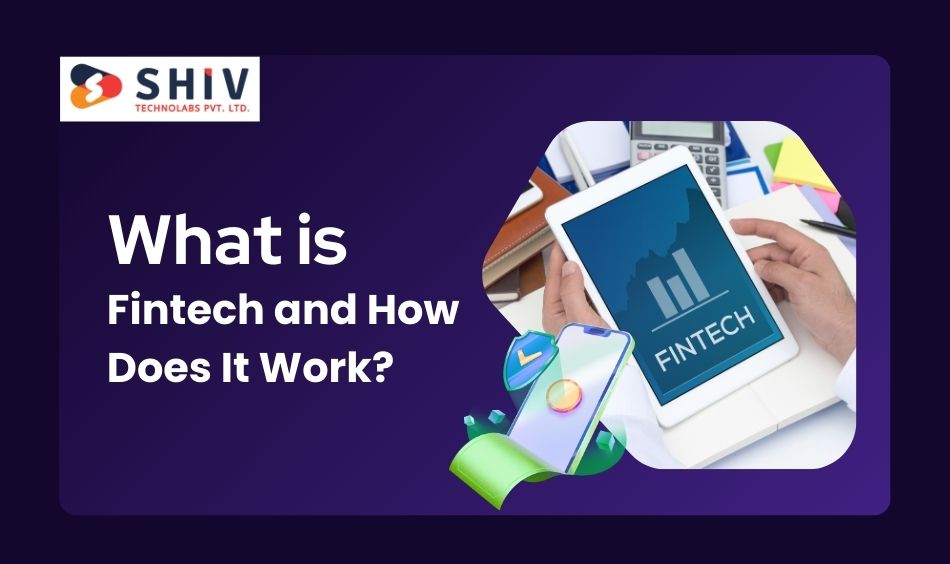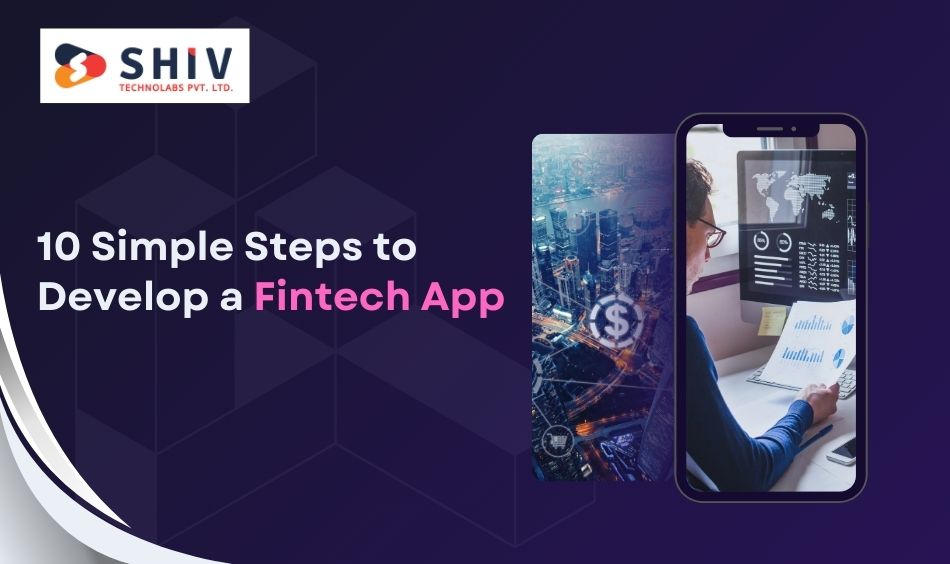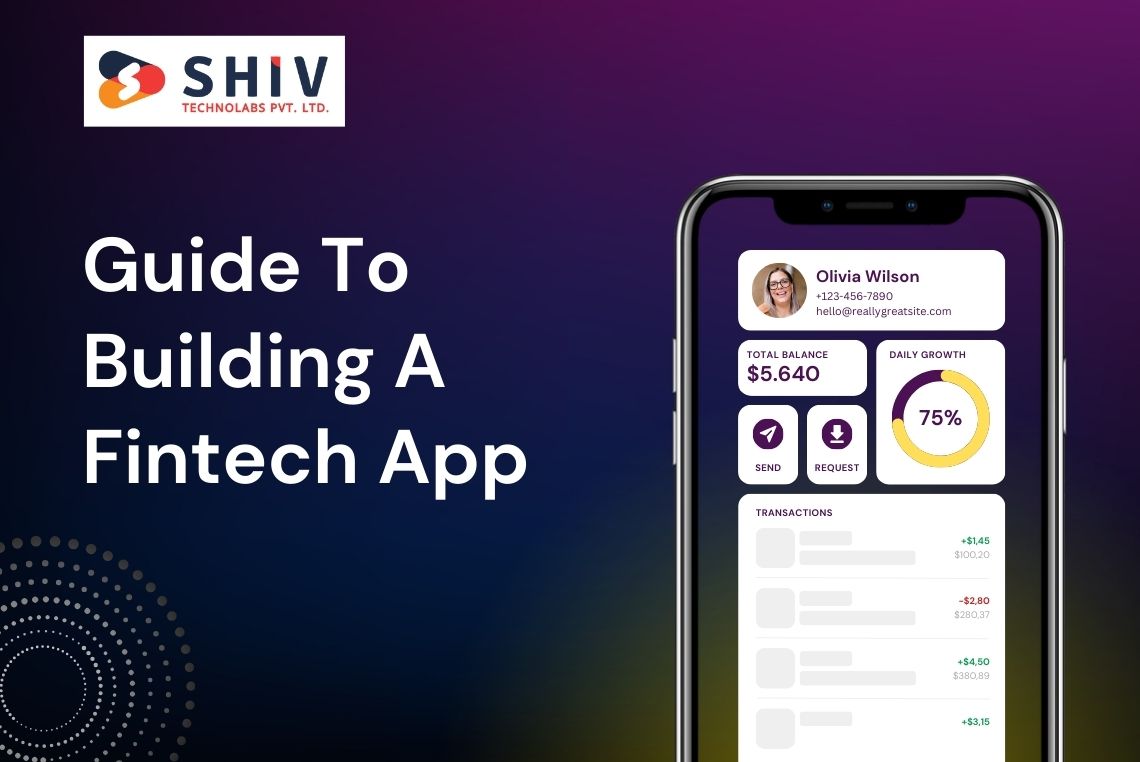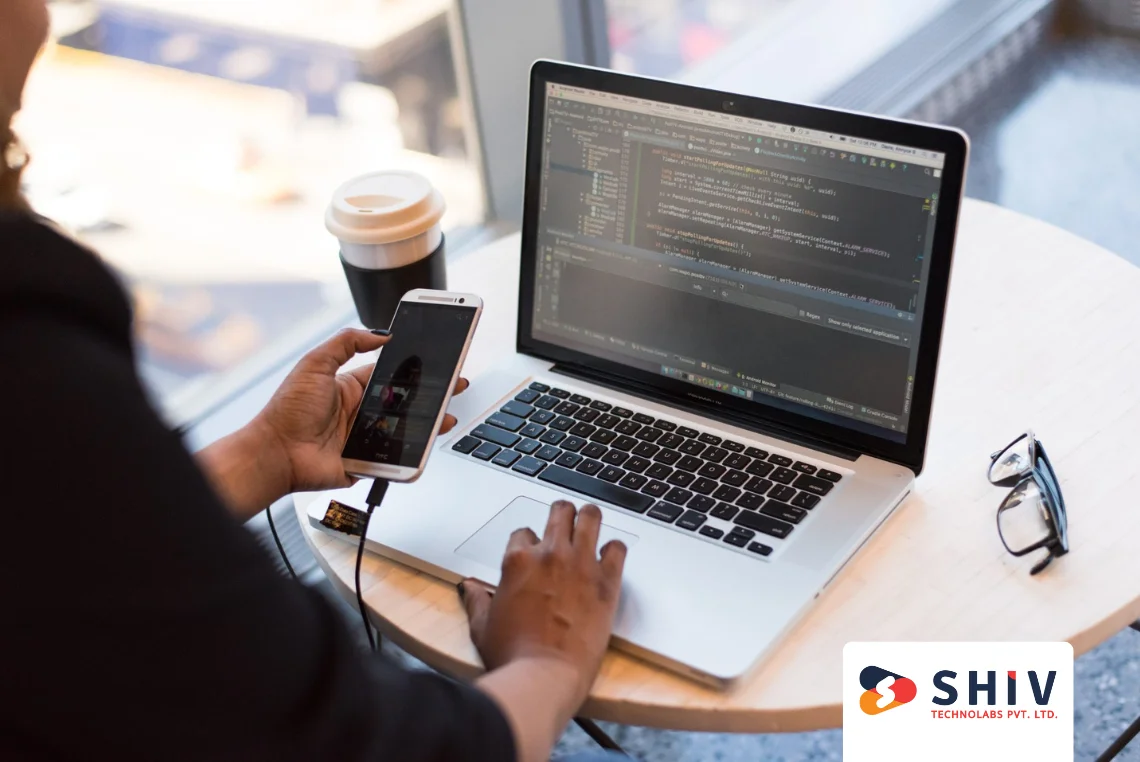Table of Contents
In recent years, the financial technology (fintech) sector has transformed the way we interact with money, offering innovative solutions that streamline financial processes and enhance user experiences. Fintech apps have become a cornerstone of this transformation, simplifying everything from personal banking to investment management. Building a fintech app involves a unique blend of technology, regulation, and user experience design, all to meet the high expectations of today’s digital-savvy consumers.
Creating a fintech app can seem daunting, given the complexities of financial regulations, data security, and user interface design. However, by breaking down the process into manageable steps, you can develop a fintech app that meets user needs while adhering to industry standards.
The fintech sector is rapidly evolving, with mobile app development playing a crucial role in this transformation. According to a report by Grand View Research, the global fintech market is expected to reach $305 billion by 2025, growing at a compound annual growth rate (CAGR) of 22.17% from 2020. This significant growth underscores the increasing reliance on mobile applications to manage financial transactions, investments, and personal finance.
Furthermore, a survey by Statista highlights that over 70% of global financial institutions have already adopted mobile technology as a key part of their digital strategy. The adoption of mobile apps for financial management is driven by their convenience and accessibility, allowing users to perform transactions, track investments, and manage their finances from anywhere. This trend illustrates the critical importance of investing in mobile app development to meet consumer expectations and stay competitive in the fintech industry.
What is Fintech and How Does It Work?

Fintech refers to the integration of technology into offerings by financial services companies to improve their use of financial services. This broad category encompasses a range of applications, including mobile payment apps, online lending platforms, investment management tools, and blockchain technologies.
At its core, fintech aims to make financial services more accessible, efficient, and user-friendly. Here’s a brief overview of how fintech works:
- Technology Integration: Fintech apps leverage modern technology such as cloud computing, artificial intelligence, and blockchain to deliver financial services. These technologies enable features like real-time transaction processing, personalized financial advice, and secure data storage.
- User Interaction: Fintech apps are designed with user experience in mind. They offer intuitive interfaces that allow users to perform financial transactions, manage accounts, and access financial information with ease.
- Regulation and Compliance: Given the sensitive nature of financial data, fintech apps must comply with various regulations and standards. This includes adhering to data protection laws, implementing strong security measures, and obtaining necessary licenses.
- Data Analysis: Fintech apps often use data analytics to offer insights and recommendations. By analyzing user behavior and financial data, these apps can provide personalized financial advice, detect fraud, and improve overall service quality.
- Security Measures: Protecting user data is a top priority in fintech. Apps implement encryption, multi-factor authentication, and other security measures to safeguard against unauthorized access and fraud.
Also read : USA Mobile App Development: Key Aspects to Keep in Mind
10 Simple Steps to Develop a Fintech App

Building a fintech app is a multi-step process that combines technology, business strategy, and compliance. Here’s a thorough breakdown of each step to guide you through the development of your fintech application:
1) Define Your Vision and Goals
- Clarify Your Purpose: Articulate the core objective of your fintech app. Are you focusing on investment management, personal budgeting, payment processing, or lending? A clear vision helps guide the development process and keeps the team aligned.
- Determine Key Features: List the essential features your app will include. For instance, will it offer features like transaction tracking, budgeting tools, real-time notifications, or financial analytics?
- Understand Your Users: Identify the specific needs of your target audience. This could include demographics, financial habits, and pain points that your app will address.
2) Conduct Market Research
- Identify Market Needs: Conduct surveys and interviews to understand the financial challenges faced by your target audience. Use this information to tailor your app’s features to meet these needs.
- Analyze Competitors: Research existing fintech apps to identify their strengths and weaknesses. This can help you find gaps in the market and opportunities to differentiate your app.
- Evaluate Trends: Stay updated with current fintech trends, such as advancements in blockchain technology, artificial intelligence, or changes in regulatory standards. This can provide insights into potential features and technological advancements to incorporate.
3) Regulatory Compliance
- Understand Legal Requirements: Research the financial regulations that apply to your app. This includes data protection laws (e.g., GDPR, CCPA), financial transaction regulations, anti-money laundering (AML) requirements, and know-your-customer (KYC) regulations.
- Consult with Legal Experts: Engage with legal professionals who specialize in fintech to help navigate the regulatory landscape and ensure your app adheres to all legal requirements.
- Prepare for Audits: Be ready for regulatory audits by implementing strong documentation practices and maintaining up-to-date records of compliance measures.
4) Create a Detailed Plan
- Develop a Project Timeline: Outline the entire development process with key milestones and deadlines. This includes phases like design, development, testing, and launch.
- Budget Allocation: Create a detailed budget covering all aspects of app development, including design, development, testing, marketing, and ongoing maintenance.
- Team Formation: Assemble a team with the necessary skills for your project. This might include developers, designers, security experts, and business analysts.
5) Design the User Interface (UI)
- Create Wireframes: Develop wireframes to map out the structure of your app’s interface. This helps visualize the layout and flow of user interactions before moving to high-fidelity designs.
- Develop Mockups: Design detailed mockups to represent the visual elements of your app. Ensure that the design aligns with your brand’s identity and meets user expectations.
- Focus on Usability: Design with the user in mind. Prioritize ease of navigation, intuitive controls, and accessibility features to ensure a positive user experience.
6) Develop the Backend Infrastructure
- Select Technologies: Choose the technology stack for your backend infrastructure. This might include programming languages, frameworks, and databases. Consider factors like performance, scalability, and security.
- Build Database Architecture: Design a database schema that supports efficient data storage and retrieval. Ensure it can handle high transaction volumes and user data securely.
- Implement APIs: Develop and integrate APIs for various functionalities, such as payment processing, third-party service connections, or data analytics.
7) Implement Security Measures
- Encrypt Data: Apply encryption techniques to protect sensitive data during transmission and storage. This helps prevent unauthorized access and data breaches.
- Secure Authentication: Implement secure authentication methods, such as multi-factor authentication (MFA), to verify user identities and safeguard accounts.
- Regular Security Testing: Conduct regular security assessments and vulnerability scans to identify and address potential threats.
8) Develop and Integrate Key Features
- Build Core Features: Develop the essential functionalities of your app, such as transaction processing, account management, and financial reporting.
- Integrate Third-Party Services: If your app requires third-party services (e.g., payment gateways, financial data providers), integrate these services and ensure they function correctly with your app.
- Conduct Beta Testing: Release a beta version of your app to a select group of users. Gather feedback on features, usability, and performance to make necessary improvements.
9) Conduct Testing and Quality Assurance
- Perform Functional Testing: Test each feature of your app to ensure it works as intended. Check for issues like bugs, errors, and performance problems.
- Conduct Usability Testing: Evaluate the user experience by having real users interact with the app. Gather feedback on ease of use, navigation, and overall satisfaction.
- Test for Performance: Assess the app’s performance under various conditions, such as high traffic or large volumes of data. Ensure it remains responsive and reliable.
10) Launch and Monitor
- Prepare for Launch: Plan your app’s launch strategy, including marketing and promotional activities. Ensure that your app is available on relevant platforms (e.g., iOS, Android) and is optimized for different devices.
- Monitor Performance: After launch, track the app’s performance using analytics tools. Monitor metrics such as user engagement, transaction volumes, and system performance.
- Gather User Feedback: Collect feedback from users to identify areas for improvement. Use this feedback to make iterative updates and address any issues that arise post-launch.
Also read : How to Optimize Mobile Apps for Better Performance
Factors to Consider When Designing a Fintech App
- User Experience (UX): Designing a fintech app starts with focusing on user experience. The interface should be simple and easy to understand, allowing users to perform tasks effortlessly. An intuitive design helps users find features quickly and complete actions without frustration. Accessibility is also vital; the app should cater to users with disabilities by incorporating features like screen readers and adjustable text sizes to make the app usable for everyone.
- Security: Security is crucial in fintech apps due to the sensitive nature of financial data. Implementing strong encryption methods protects data both during transmission and while stored. Regular security audits and updates are necessary to address vulnerabilities and maintain a high level of data protection.
- Regulatory Compliance: Financial apps must comply with various regulations depending on their geographical reach. Understanding and adhering to legal requirements, such as anti-money laundering (AML) and know-your-customer (KYC) regulations, is essential for operating legally. Data privacy laws, such as GDPR or CCPA, also need to be followed to ensure that user information is handled correctly and legally.
- Performance: The performance of a fintech app is critical to user satisfaction. Fast load times and efficient operation are necessary to keep users engaged and satisfied. The app should be able to handle an increasing number of users and transactions without compromising on speed or reliability. Scalability is important to accommodate growth and avoid performance issues as the user base expands.
- Integration Capabilities: Integrating with other services and platforms is often necessary for a fintech app. This might include connecting with payment gateways, financial data providers, or other third-party services. Ensuring that these integrations are smooth and reliable can enhance the app’s functionality and user experience. APIs play a key role in these integrations and should be designed to operate securely and efficiently.
- Design and Branding: The app’s design should reflect the brand’s identity and appeal to its target audience. Consistent use of colors, fonts, and logos helps reinforce brand recognition and trust. An appealing visual design not only attracts users but also contributes to a professional image.
- Functionality: Core functionalities should be well-defined and implemented with the user in mind. The app must deliver on its primary promises, such as transaction processing or financial tracking, with reliability. Features should be designed to be straightforward and effective, avoiding unnecessary complexity that could hinder usability. Customization options can enhance user satisfaction by allowing individuals to adjust settings to their preferences.
- Testing and Quality Assurance: Thorough testing is essential to ensure the app functions correctly and meets quality standards. This includes functional testing to verify that features work as intended, usability testing to ensure the interface is user-friendly, and performance testing to check how the app handles various conditions. Regular updates based on testing results are important for maintaining app quality over time.
- Data Management: Effective data management is vital for the app’s operation and user trust. The app should ensure that all financial data is accurate and up-to-date, which is crucial for users making financial decisions. Efficient data storage solutions are needed to manage user information securely and retrieve it quickly. Additionally, having a backup and recovery plan helps protect against data loss and ensures that information can be restored if necessary.
- User Support: Providing adequate user support is essential for addressing any issues that arise and helping users make the most of the app. Support options should be easily accessible within the app, including help sections, FAQs, and contact information for customer service. A feedback mechanism allows users to report problems and suggest improvements, which helps in continually refining the app.
Conclusion
Creating a fintech app involves careful consideration of various elements to deliver a product that meets user needs and adheres to regulatory standards. By focusing on user experience, security, performance, and compliance, you can build an app that stands out in the competitive financial technology sector. Thorough planning, testing, and continuous updates are essential to maintaining a high-quality application that delivers value to its users.
If you are looking for a trusted partner in the fintech app development journey, look no further than Shiv Technolabs. As a leading mobile app development company in UAE, we specialize in crafting innovative and secure fintech solutions that cater to your unique business requirements. Our team of experienced developers and designers is dedicated to delivering high-quality applications that not only meet but exceed industry standards. Contact Shiv Technolabs today to turn your fintech app idea into a successful reality.



















